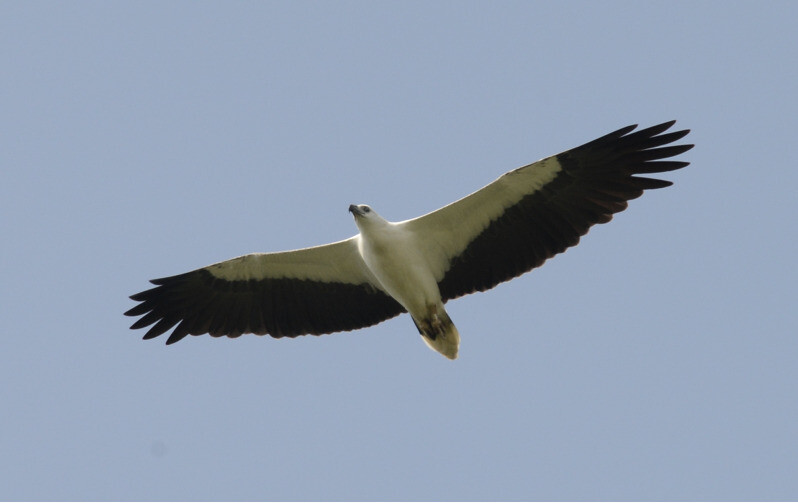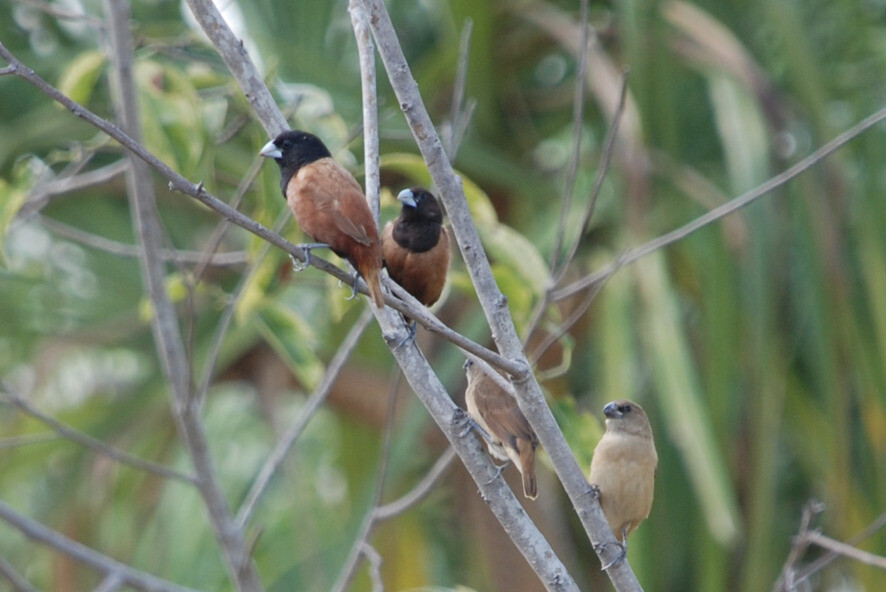Avery Cotton, Opinions Editor
@averyccourant
I crouched on the forest floor, peering through a tiny hole. That cylinder of light, filtered into a green mist by the low jungle canopy, was my tunnel into a hidden domain. More attentive than I’d been in my nine years, I scanned for signs of life in the dense layers of vegetation that surrounded me. Raising my binoculars, I probed each mossy tree branch and overgrown thicket for signs of my quarry. Any moment now, I reassured myself. All that separated me from a pitta was a thin strip of blue tent fabric, a few feet of damp ground, and a bit of luck.
Growing up in Singapore, I became absorbed by birdwatching after an encounter with a White-bellied Waterhen, a bizarre-looking swamp denizen whose bright yellow legs and glossy black plumage resonated with a part of me I didn’t yet know existed.
Through the Internet, I became acquainted with hidden gems nestled within Singapore’s urban jungle. Armed with a healthy dose of carefree curiosity, I often found myself on unfamiliar trails in the unlikeliest of places, such as Bukit Brown Cemetery, in pursuit of my next lifer (new species in birdwatching lingo). I chronicled each lifer in a presentation with a brief synopsis of each species.

To my dismay, my superficial research did not always bear fruit. Many locations, though bird hotspots on paper, were ultimately letdowns. (Kranji Marsh, you’ll get your redemption when I return someday). Over time, however, my experience began to accumulate, and by the time I departed Singapore, my life list had surpassed 100 species.
Upon moving to the US, I began developing an understanding of what made my hobby so interesting. In my mind, what separates birdwatching from the other activities I enjoy is its universal accessibility juxtaposed with its exclusivity to the select few who actively seek it out. We’re all familiar with woodpeckers, crows, and sparrows, but what about Black-throated Green Warblers?
Every time I pick up my binoculars, I enter a hidden portal to a world that transcends manmade distractions. There, everything, rather paradoxically, moves both faster and slower at the same time. While birds themselves are inherently fast-moving creatures, observing them in their habitats removes me from the hustle and bustle of daily life, slowing me down to the steady pace at which the interactions of the natural environment occur. I find solace in the fact that in a world shackled by academic responsibilities, all it takes is a pair of binoculars and a bit of walking to escape.
Over the years, several species and bird encounters in particular stand out. An elusive Black-backed Dwarf Kingfisher in Singapore taught me the value of patience in attaining goals and checking off birds from my life list. Soaring Bald Eagles have taken my breath away—untethered to the ground, embracing their freedom—limitless. A parasitic cowbird exploiting a Yellow Warbler for food has taught me that deception pervades the natural world just as it does in human society. In essence, I’ve strived to use my experiences to better understand the natural world and view life through a novel lens.

Back on the forest floor, I shifted my gaze toward a small log near the tent. There, a bowl of dried mealworms awaited eager visitors, strategically placed by my bird guide. He had informed us that he’d seen a pitta on his last walk, providing me with uncontainable anticipation that morning.
Disappointingly, I didn’t end up seeing a pitta that day, but I managed to console myself with the numerous lifers that I did observe. I gained a new appreciation that day for the value of persistence regardless of the final outcome, even if it meant trekking miles into a secluded jungle and crouching in the suffocating humidity for hours. Oh, well, I told myself as I emerged from the Thai jungle into the blazing afternoon sun. There’s always next time. Plus, a glorious singing Black-crested Bulbul in the park entrance treetops didn’t hurt.




